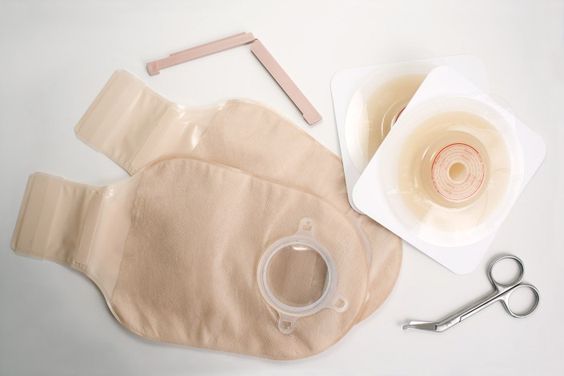Ostomy surgery is an increasingly common treatment for people with Crohn's disease. This surgery involves attaching a section of the colon directly to the abdominal wall to create an artificial anus. The purpose is to alleviate the suffering of patients and improve the quality of life. Crohn's disease is an inflammatory bowel disease. Symptoms include abdominal pain, diarrhea, constipation, weight loss, fatigue, etc. The etiology is not fully understood, but it is believed to be related to factors such as genetics, the immune system, and the environment. There is currently no cure for Crohn's disease, but medication, surgery, and nutritional therapy can be used to relieve symptoms and control disease progression. The following are the understanding and nursing suggestions for enterostomy in Crohn's disease. Let's take a look together.
Enterostomy needs in patients with Crohn's disease :
Crohn's disease is a chronic inflammatory bowel disease that can affect any part of the digestive tract, but most commonly affects the ileum and jejunum. Symptoms of Crohn's disease include abdominal pain, diarrhea, constipation, weight loss, fatigue, etc., which seriously affect the quality of life of patients. For some people with Crohn's disease, an enterostomy may be necessary.
How should the wound be cared for after surgery?
Enterostomy is a relatively complicated operation, and postoperative wound care must be given sufficient attention. Here are some common post-operative wound care practices:
1. Keep the wound clean: The postoperative wound needs to be kept clean and dry to avoid bacterial infection. The doctor will give the patient guidance on wound cleaning and dressing replacement after the operation, and the patient needs to follow the doctor's instructions for wound care.
2. Choose the right wound dressing: Silicone Foam Dressing is recommended. Silicone foam dressing can absorb wound exudate and secretions, keep the wound dry and clean, and reduce the risk of infection. Silicone gel foam dressing has good absorption and the effect of promoting wound healing, and the silicone gel is easy to tear and is not easy to cause secondary damage to the wound.
3. Regular dressing change: Postoperative wounds need regular dressing changes to keep the wound dry and clean. Patients need to pay attention to the time and method of dressing change to avoid wound infection and dressing adhesion.
4. Avoid strenuous exercise: postoperative patients need to avoid strenuous exercise and lifting heavy objects to avoid tearing and injury to the wound.
5. Observe the condition of the wound: patients need to observe the condition of the wound regularly and report to the doctor in time if there are symptoms such as redness, swelling, pain, and exudation.
6. Dietary conditioning: Postoperative patients need to follow the doctor's dietary advice, avoid irritating food and hard food, and ensure nutritional intake while avoiding irritation to the wound.
In short, postoperative wound care is very important for the recovery of patients. Patients need to strictly follow the doctor's instructions for wound care, keep the wound clean and dry, and avoid infection and other complications.
Complications and management after enterostomy?
Enterostomy is a more complicated operation and some complications may occur after operation. Here are some common enterostomy complications and how to manage them:
1. Wound infection: postoperative wound may be infected, manifested as wound redness, pain, exudation, etc. Treatment methods include using antibiotics, changing dressings regularly, and keeping the wound clean and dry.
2. Intestinal obstruction: Intestinal obstruction may occur after surgery, manifested as abdominal pain, bloating, and vomiting. Treatment methods include fasting, parenteral nutrition, and the use of intestinal exhaust tubes.
3. Intestinal perforation: Intestinal perforation may occur after surgery, manifested as abdominal pain, nausea, vomiting, fever, diarrhea, abdominal distension, etc. How to deal with it: Once you notice the symptoms of intestinal perforation, you should seek medical attention immediately. Treatment methods include surgical repair, antibiotic therapy, and nutritional support.
For more information on Innomed®Silicone Foam Dressing, Refer to the Previous Articles. If you have customized needs, you are welcome to contact us; You Wholeheartedly. At longterm medical, we transform this data by Innovating and Developing Products that Make Life Life easier for those who need loving care.
Editor: kiki Jia
Date: July 12, 2023

 English
English عربى
عربى Español
Español русский
русский 中文简体
中文简体








